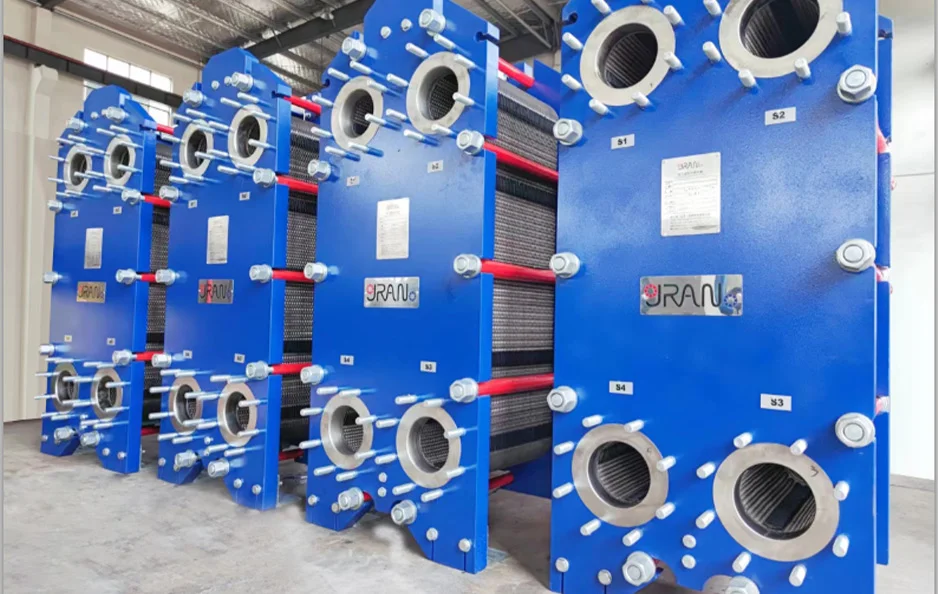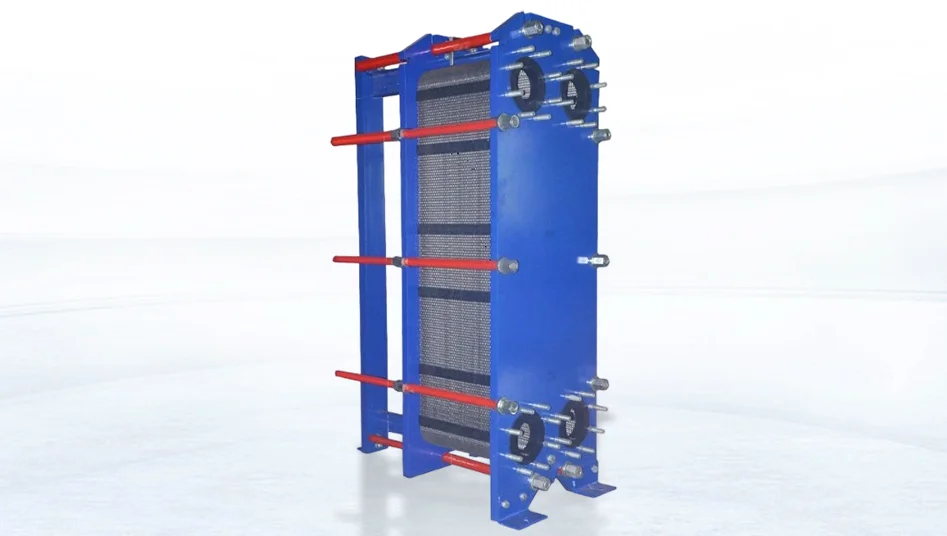
In the field of industrial heat transfer, picking the right plate heat exchanger (PHE) matters a lot. It helps improve efficiency. It cuts costs too. And it makes sure things run reliably over time. At Grano Heat Energy Technology Co., Ltd., we have more than ten years of know-how in making top-notch PHEs. We’ve aided many customers in areas like HVAC, petrochemical, food processing, and marine work. Our gasketed, semi-welded, and brazed plate heat exchangers work well as cheaper options to big names like Alfa Laval and GEA. They give strong results that fit your exact needs.
This guide looks closely at the main factors that shape PHE choices. It lays out a clear step-by-step method. And it points out traps to dodge. Are you updating an old setup? Or planning a fresh one? Knowing these parts will let you decide wisely. Let’s see how Grano Heat’s made-to-order fixes can boost your heat transfer jobs.
Key Factors in Plate Heat Exchanger Selection
Selecting a plate heat exchanger goes beyond grabbing any model. It’s about matching gear to your daily work. At Grano Heat, our tech team looks at the full picture. They make sure it fits in smoothly. And it works at its best. Here, we break down the big factors.
Media Types and Fluid Characteristics
The base of PHE picking starts with the fluids at play. Various media call for special plans. These stop rust. They keep flow smooth. And they hit good heat swaps.
Hot Medium
The hot medium could be steam, thermal oil, hot water, or work fluids. It sets the rules for material fit and build strength. Take steam jobs, for example. They need tough setups to deal with high heat and possible bursts. Thick oils, like in oil refining, call for plates that stir up flow. This boosts heat trade.
At Grano Heat, our semi-welded PHEs shine with tough hot media. Think power plants or steel mills. We focus on fighting rust. We pick stuff like 316L stainless steel or titanium mixes. These hold up in hot spots up to 180°C. Skipping these traits can cause early breakdowns. But our advice sessions help match the best exchanger to your hot medium’s thickness, acid level, and heat hold.
We often see clients in tough spots. Say, a factory with oily heat sources. Without the right pick, leaks happen fast. Our team runs checks first. Then, we suggest plates with deeper grooves. This keeps flow lively. And heat moves better. Over years, this saves time and cash.
Cold Medium
The cold medium plays a big role too. It might be cooling water, coolants, or salt mixes. It shapes flow moves and dirt buildup risks. In food or drug work, where clean is key, we push gasketed PHEs. They break apart easy for CIP cleaning. This fits chilled water flows with low pressure hits.
Grano Heat’s brazed PHEs suit tight, high-push cold setups. Like boat cooling systems, where room is short and output counts. We weigh things like start temps, flow speed, and scale chances. Hard water, for one, builds up quick. So, we plan to avoid output drops later.
Clients tell us about sticky issues. Cold sides that clog from minerals. We fix that with wider paths in plates. Flow stays free. Cleaning takes less effort. And the whole unit lasts longer. It’s simple tweaks like these that keep systems humming.
Flow Rate and Temperature Difference
Flow speeds and temp gaps drive the math for heat moves. Big flows need more plates. This stops too much pressure loss. Wide temp gaps, say 50-100°C, raise the log mean temp diff (LMTD). That ups overall work.
In real use, wrong flow can cut the heat pass rate (U-value) by near a third. This leads to big units and higher power bills. Grano Heat’s plan tools mimic these bits. They suggest setups that mix flow pace—often 0.3-1 m/s for good stir—with your heat need. In HVAC chillers, we tune for ΔT of 5-10°C. This maxes the COP, or how well it cools per energy in. We pull from over ten years of field info across 40 lands.
Picture a busy plant. Water rushes through fast. Without right sizing, pumps strain. Noise rises. Bills climb. Our sims spot that early. We adjust plate stacks. Flow evens out. Temps hold steady. Workers notice the quiet run. And bosses like the lower tabs.
Operating Pressure and Pressure Resistance Requirements
PHEs have to take daily pushes without safety slips or work dips. Basic gasketed types manage up to 25 bar. But high-push spots in oil plants might need stronger frames. Or brazed builds for 40 bar plus.
Safety extras are a must. Our Grano Heat PHEs face hard water tests at 1.5 times the plan push. They meet global rules like ASME and PED. In shaky places like oil fields, we add crack-proof ports and frame boosts. This keeps runs non-stop. And downtime stays low.
We’ve helped sites where pressure swings wild. One client had burst fears. We swapped in beefed frames. Now, they run bold. No scares. Just steady output. It’s peace of mind in a box.
Cleaning and Maintenance Requirements
A top plus for PHEs is their block style. You can take them apart quick for washes. This beats tube setups hands down. But in dirt-heavy fields like milk plants or waste clean, pick models with broad channels and easy gaskets.
Grano Heat puts upkeep front and center in our gasketed PHEs. They have clip gaskets that cut swap time by half over stick types. For spots with often CIP, we give semi-welded picks. They keep harsh media apart. Yet let plate checks happen easy. Our maker services add field lessons. So your crew uses these perks for longer runs between fixes. And lower full-life costs.
Maintenance tales from clients stick with us. A food shop fought gummed plates. We switched to open-gap designs. Washes now take hours, not days. Crews smile. Output jumps. It’s not fancy. Just smart picks that pay off.
Material Selection
Rust eats heat gear quiet-like over time. It chews plates and seals. Picks for stuff tie to media bite. Austenitic steels like 304/316 for most jobs. Hastelloy for acid spots. Or titanium for salt water cool in boats.
At Grano Heat, we grab prime stuff with clean certs and even make. We tailor to your fluid’s salt load or acid swings. For drug-level clean, our food PHEs hit FDA and EHEDG marks. No dirt slips. And they grab over 95% heat back. This not only stretches gear life. It fits green aims by cutting waste too.
We’ve seen bad picks lead to big bills. A chem firm used wrong steel. Pits formed fast. We redid with titan blends. Now, it’s smooth sailing. No extra spends. Just solid work year after year.
Steps for Selecting Plate Heat Exchangers

A planned pick turns tough needs into clear specs. Grano Heat’s techs lead folks through this way. They use sharp sim tools for spot-on work.
Determine Heat Transfer Requirements
Kick off by pinning your wants. Work out heat job (Q = m × Cp × ΔT) with flow amounts (m), heat hold (Cp), and temp shifts (ΔT). Add dirt buffers—often 10-20% more space—for real dips.
Our Grano Heat crew starts each gig with a free heat scan. It makes sure your PHE hits or beats goals. Be it 1 MW for town heat lines or 500 kW for gear cool. All while grabbing max energy back.
We chat with clients early. What’s your heat load? Flow paths? Goals? Answers shape the plan. No guesswork. Just fits that work from day one.
Select Suitable Plate Types
Plate shapes—chevron, bump, or wave—hit stir and push drops. Steep angles fit slow, thick flows. Shallow for clean, quick ones.
Grano Heat has a wide line. Chevron for all-round HVAC. Big-gap for stringy stuff in paper work. We pair shapes to your flow number. This tunes NTU, or heat units, for 85-95% hit rate.
Choices matter. Wrong shape? Flow slugs. Heat lags. We test fits. Clients get plates that hum. No fuss.
Calculate Heat Transfer Area
Use A = Q / (U × LMTD) to find space need. U is the full pass rate (200-5000 W/m²K for PHEs). Loop with plate gaps (2-5 mm) and count to match frame.
Our own calcs, built from serving many fields, guess area with ±5% right. This stops too small or too big buys that hike costs 20%.
Math’s key, but we keep it simple. Input your nums. Out pops the size. Clients nod. It fits their shop perfect.
Material and Seal Selection
Line stuff and rubbers (like EPDM for water, Viton for oils) with chem match lists. Seals take heat ups and downs sans drips.
Grano Heat’s NBR, EPDM, and FFKM picks face 10,000+ rounds. With track for rule fits. In bite setups like chem spots, we team titan plates with top seals for tough hold.
Seals fail quiet. Leaks cost. We pick pairs that last. Clients sleep better.
Confirm Equipment Structure and Installation
Wrap with frame stuff (steel with coat), port ways, and mount styles (side or up-down). Check foot space and fix access.
We hand 3D views and set guides. Back global jobs with block frames that build in under 8 hours. Great for swaps in tight boat holds.
Installs gone wrong hurt. We’ve smoothed many. One ship yard? Frames bolted fast. No delays. Just go-time.
Common Mistakes in Plate Heat Exchanger Selection
Even pros trip here. Spotting them helps.
Ignoring Media Corrosivity and Temperature
Going generic steel in salt water cuts years off life. Check rust charts always. Grano Heat’s checks have saved folks from slips. They stretch mean time between fails by ages.
One oversight? Big redo bill. We catch it. Save the day.
Overdesigning or Underestimating Needs
A fifth too big? Cash down drain. Too small? Pumps cry. Sharp models, like ours, hit the sweet spot. Payback in 2-3 years.
Balance is art. We nail it.
Neglecting Long-Term Operating Costs
Eye just buy price? Miss gasket swaps every 2-5 years. Or power hits from weak work. Our full-life looks in 10-year run costs. Often show 15-25% cuts with tuned plans.
Short view bites back. Long one wins.
Conclusion
Picking the best plate heat exchanger needs a good grip on fluid plays, push needs, and fix musts. By putting these first and sticking to a set path, you get better work, rule fits, and cash keeps. At Grano, our crew of over 100, with set techs, builds custom PHE fixes that top hopes in 40+ lands. Set to tune your heat moves? Hit us for a free chat. Lift your setups with tried, fair top work.
FAQ
Q: What types of plate heat exchangers does Grano Heat specialize in?
A: Grano Heat offers three core types: snap-on gasketed for easy maintenance in hygienic applications, semi-welded for handling aggressive fluids, and brazed for compact, high-pressure setups— all customized to your industry needs.
Q: How does Grano Heat address corrosion in corrosive environments like marine or chemical processing?
A: We select premium materials such as titanium or Hastelloy alloys, paired with compatible seals, and conduct compatibility testing to ensure resistance against chlorides, acids, and high temperatures, backed by our 10-year manufacturing expertise.
Q: What industries does Grano Heat serve with its plate heat exchanger solutions?
A: Our PHEs power HVAC systems, power plants, petrochemical refineries, food and pharmaceutical production, marine vessels, steel processing, and general machinery, with tailored designs for each sector’s unique demands.






